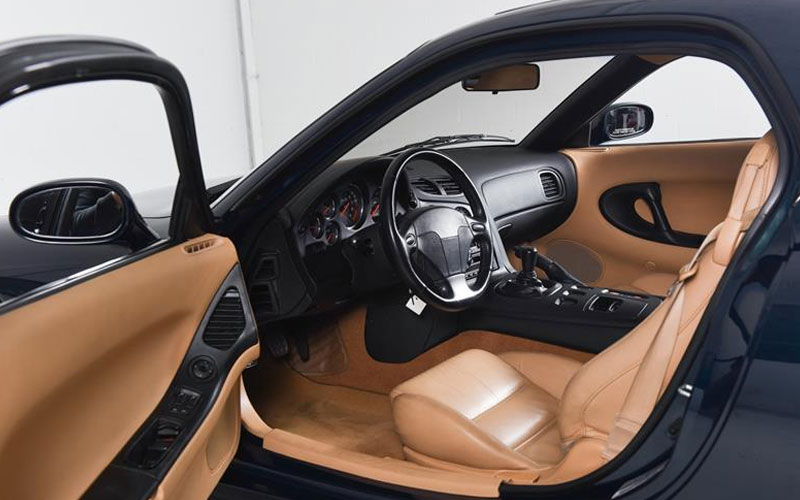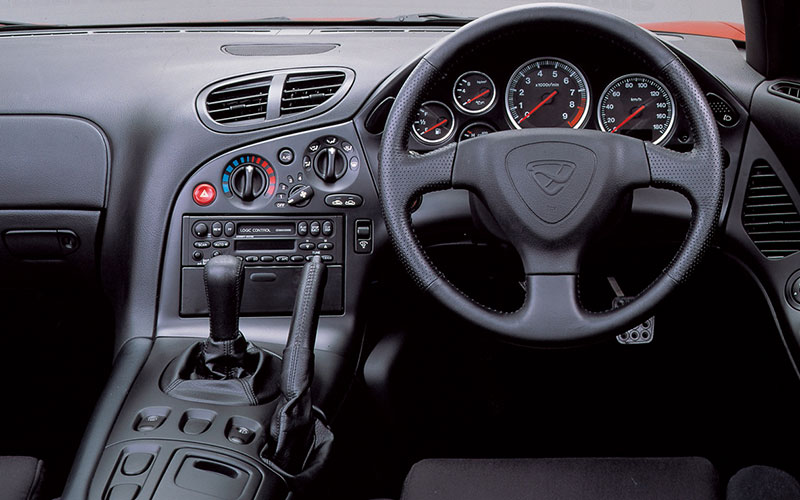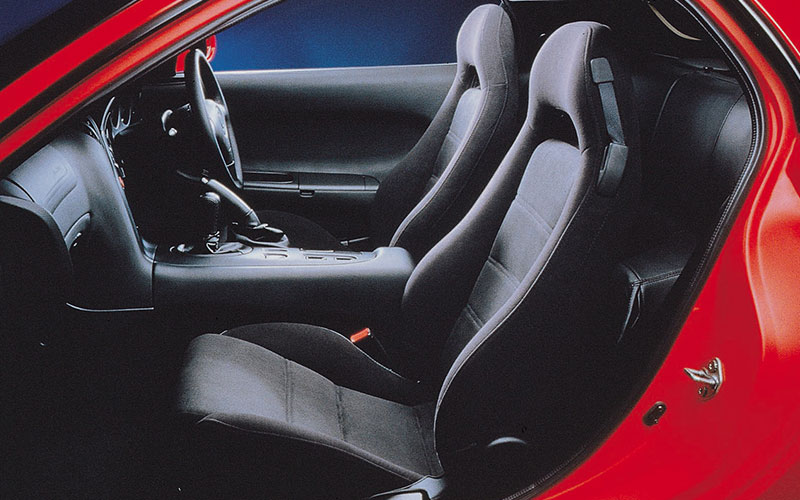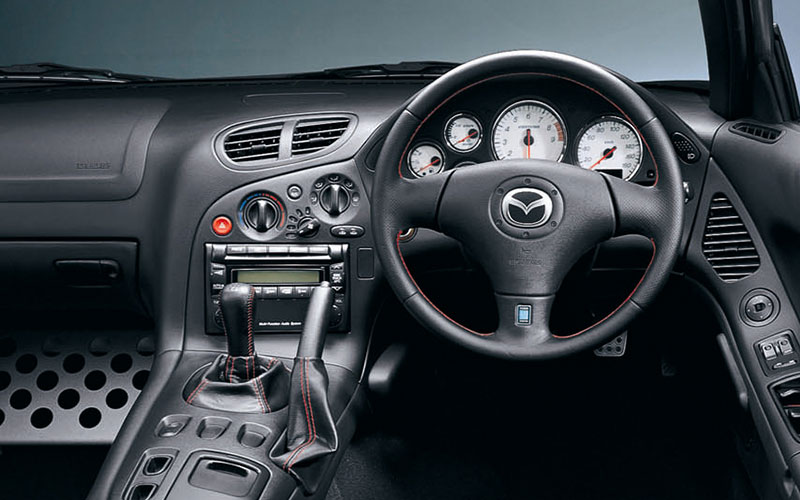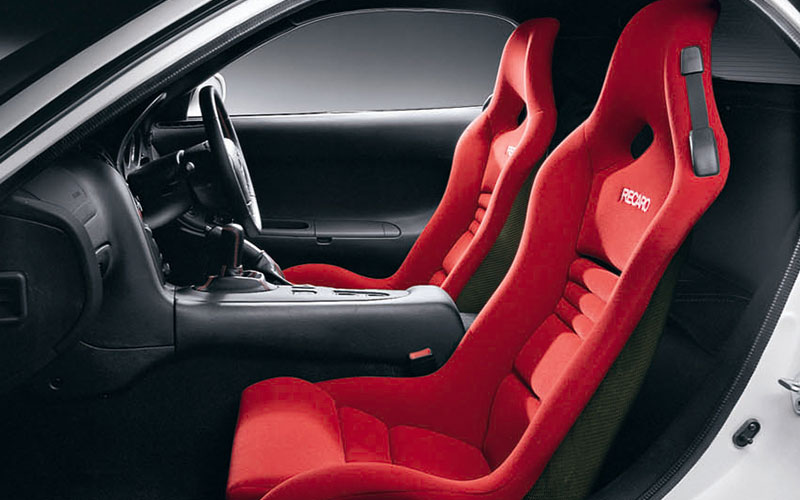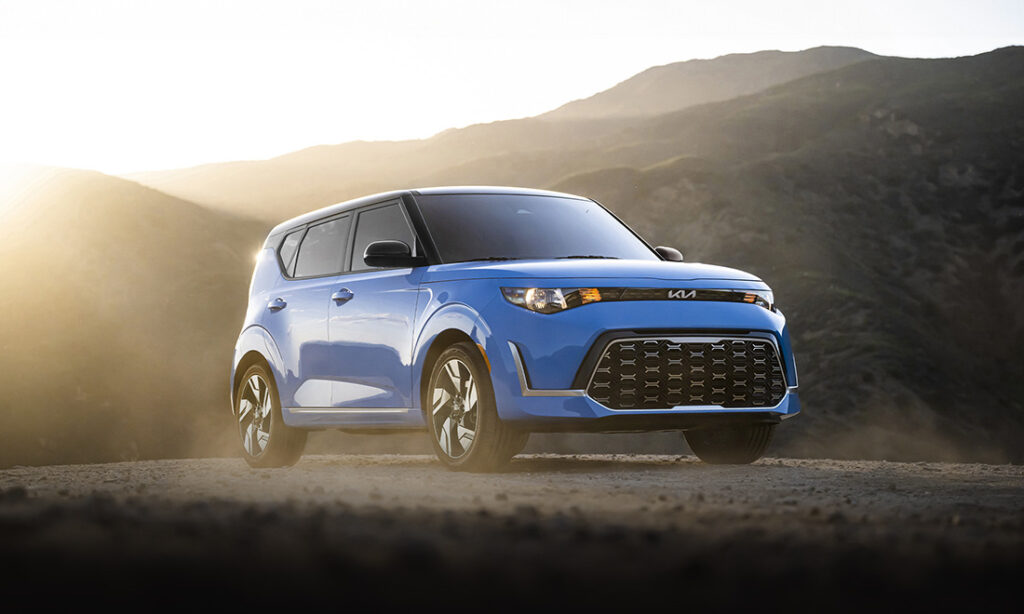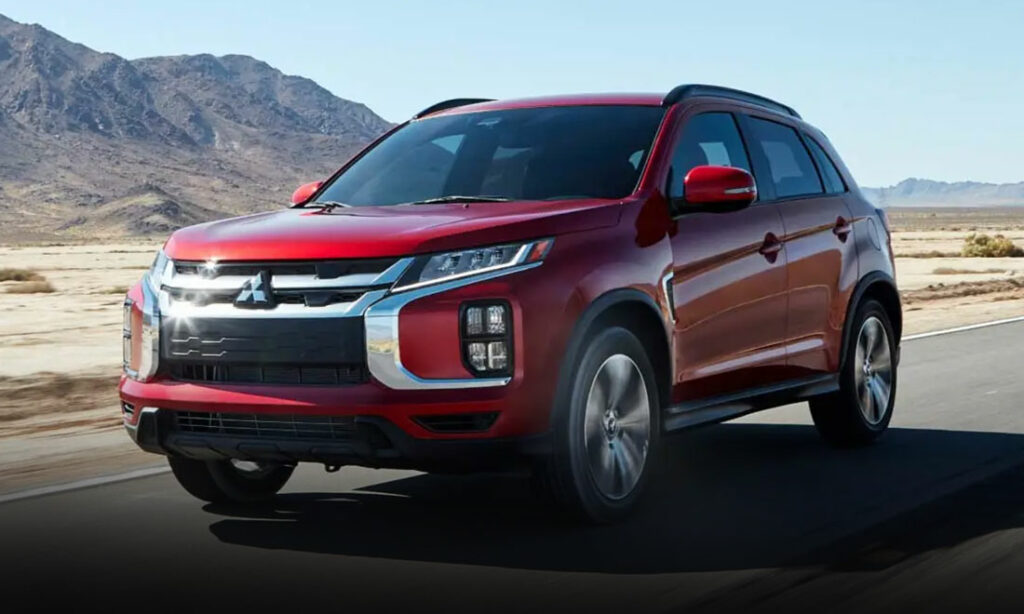The Daily Driver dives into the modern classic sports car that is the Rotary powered Mazda RX-7 FD & we find out why it’s so well-loved today.
Appreciating A Different Breed Of Sports Car
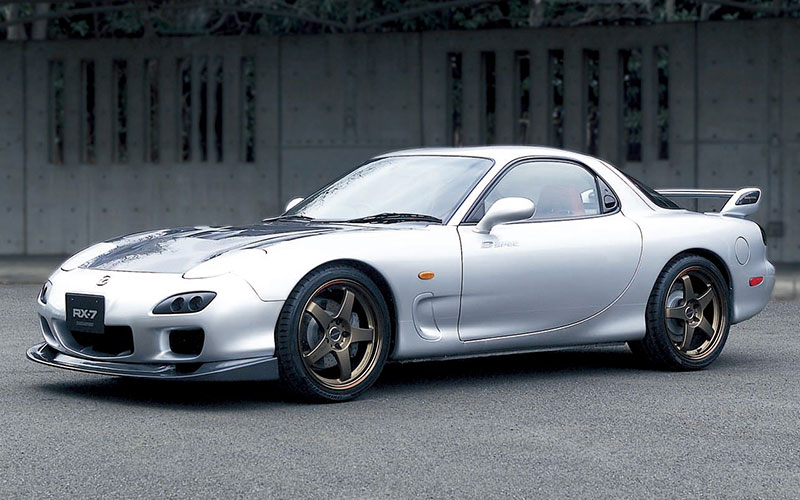
2003 Mazda RX-7 MAZDASPEED B-spec – mazda.com | Shop Mazda RX-7 on Carsforsale.com
Is it possible to feel truly inspired by a 90’s sports car with less than 300 horsepower? We say absolutely. Slipping behind the wheel of a 3rd generation Mazda RX-7 is a unique experience that is to be savored. It’s the antithesis of today’s Hellcat-horsepower crazed culture. Like a finely aged Scotch whisky, it’s to be enjoyed by those who understand and appreciate its nuance. The entire cockpit surrounds you as if you’re the only one in the world who matters at that moment, and in the RX-7 it feels true. Without sincere engagement and a clear understanding of the machine that you’re encased in, it can be difficult to experience the thrill and the awe of piloting such a unique and unquestionably beautiful car.
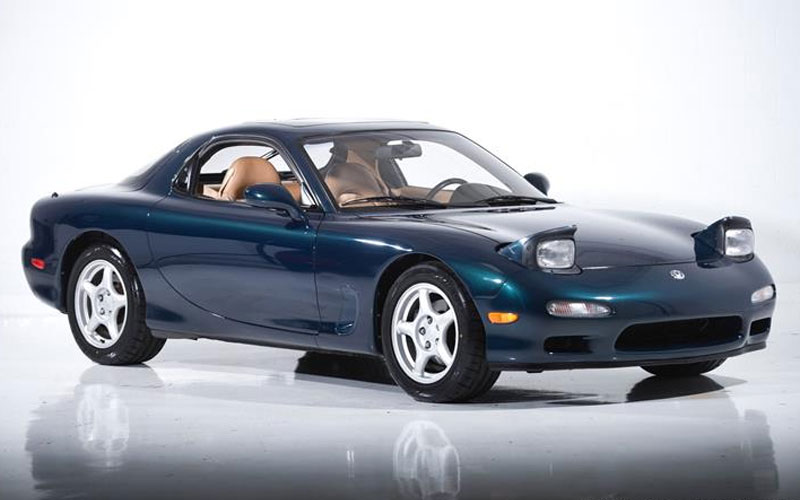
The RX-7 was released in 1978 and over the first two generations of development Mazda held up cars from Porsche as the hallmark of success. When that second-generation proved to be a better driver’s car than any Porsche of the time in the eyes of testers, it became clear that the third generation needed to take the brand to a new level. In 1991, Mazda released the subject of our review, the Mazda RX-7 FD.
The Heart Of The RX-7
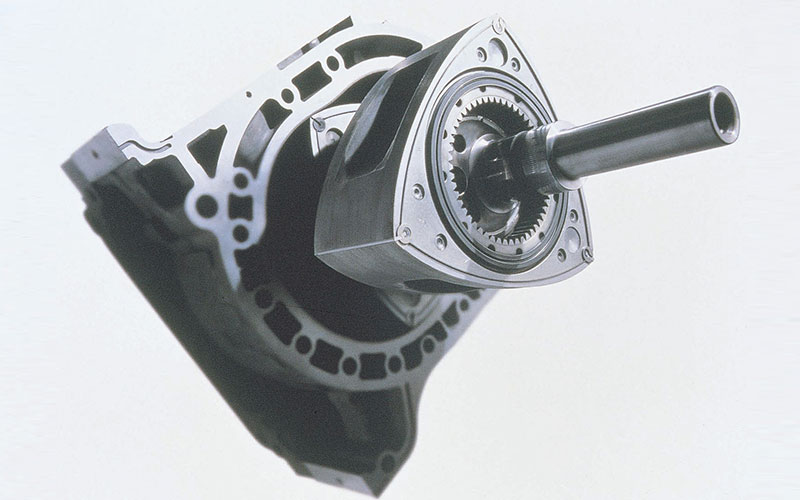
Powering the RX-7 is an engine that could easily be associated with things like the Narwhal, a Faberge Egg, or a Frank Lloyd Wright house. While nowhere near as valuable as those things, it’s similarly quirky and a bit odd, but it’s that eccentric quality that gives the RX-7 its charm. Instead of using a conventional piston style combustion engine, the RX-7 employed a Wankel engine or what Mazda called the Rotary engine. It helps the car accelerate to 60mph in just 5.4 seconds and develops roughly 240 horsepower.
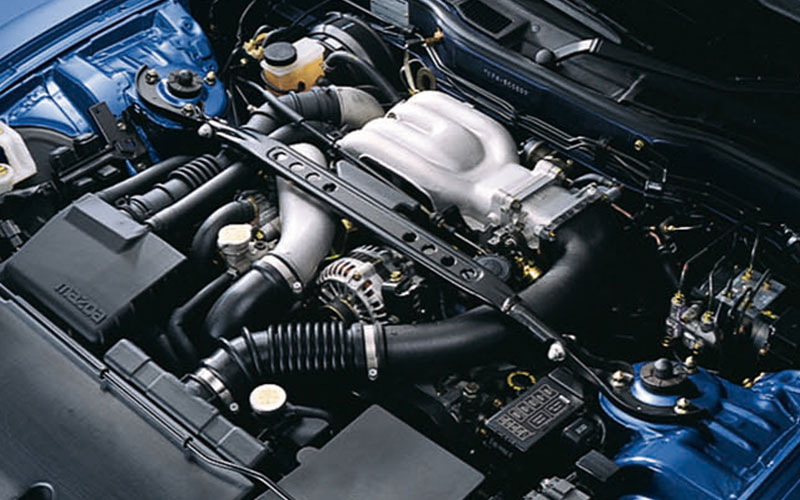
Inside of this engine, you’ll find multiple triangular shaped lobes that spin inside the main engine block. Without getting too far into the weeds, it’s important to understand that building a powerplant this way provided similar if not more consistent power levels to other engines of the time while reducing the overall weight of the assembly. In addition, the design allows the engine to rev all the way up to 8,500 RPM, an incredibly high number even today.
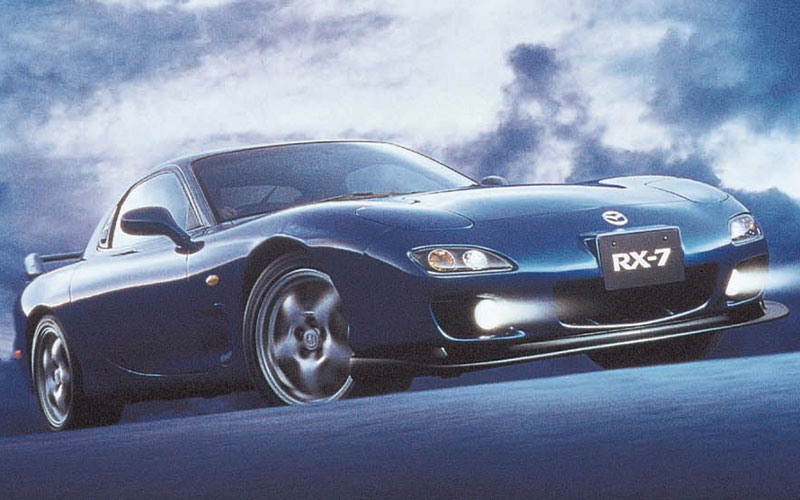
To aid in the quest for speed, two turbochargers had been mated to the example in question, but the RX-7 could be had with just one or without turbochargers at all. What’s interesting about this configuration is that these turbochargers are sequential. One is smaller and helps the car get off the line quicker while the other is larger and helps the car accelerate faster at high speeds. Each of these factors contributes to the experience of driving the RX-7.
Design Follows The Leader
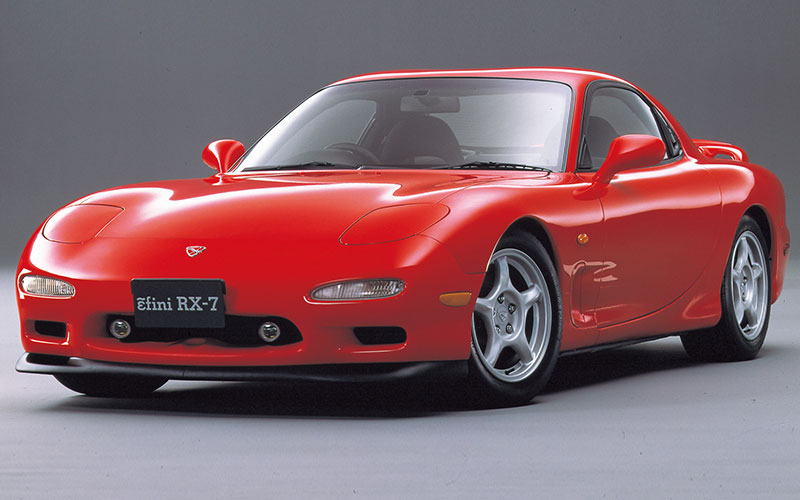
The RX-7 doesn’t only stand out because of that unique engine though. If anything, the rest of the car follows that theme of bucking the trend and making a success of it. Unlike its predecessors, it didn’t look to another car for its design cues. That’s to its credit too because frankly, there may not be a more seamlessly beautiful Japanese car on the planet.
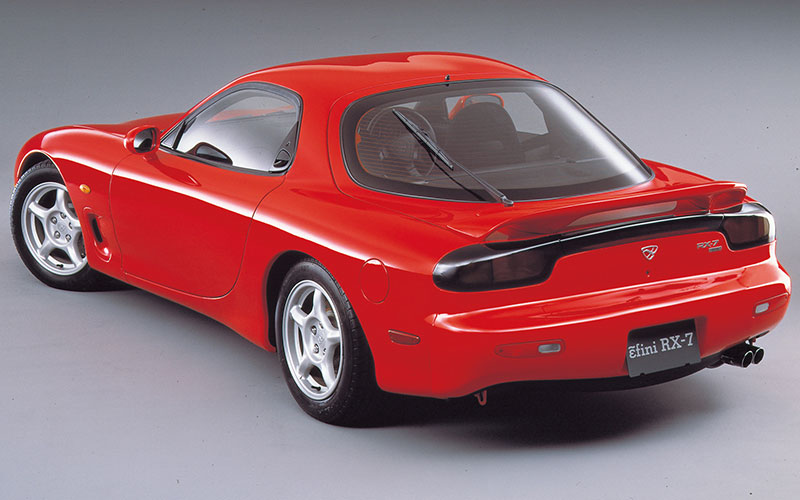
The doors aren’t broken up by some ugly handle, those are integrated into the B-pillar support on the door itself. The taillights are hidden behind a smoked assembly that aids the continuity of the design. There’s not a single crease or an angle anywhere and it stands out as a design icon down to this day.
Inside things aren’t much different. The cockpit that greets you as you slide into its bucket seats is utterly engaging and implores you to pilot the car as you would a fighter jet. In this car, everything is pointed at the driver. The passenger has almost no direct easy access to the center controls. That’s perfect though as it continues to feed into the whole aura that the RX-7 builds around the driver. That feeling continues to build in a marvelous crescendo as you begin to put miles on the odometer.
How Does It Actually Drive?
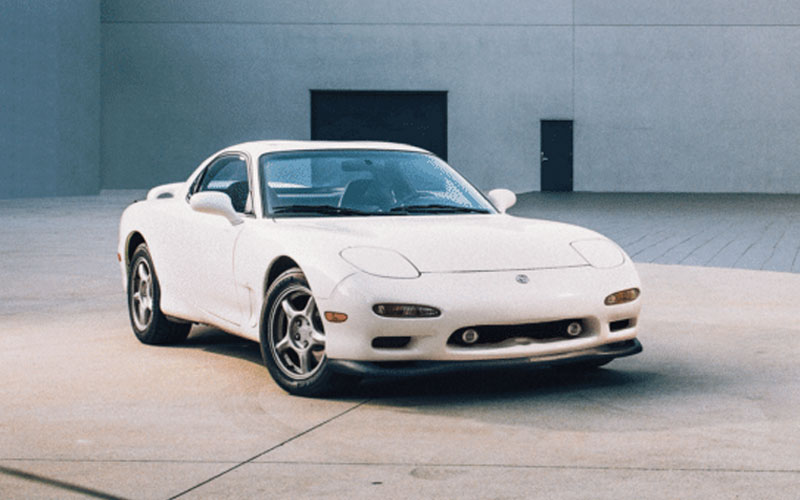
1993 Mazda RX-7 FD – mazdausa.com | Shop Mazda RX-7 on Carsforsale.com
For all that I love about the way the RX-7 looks on the outside and presents its controls on the inside, as a 6’6 person, it’s not really built for me. Though after contorting my body in ways I didn’t think was possible, any discomfort subtly disappeared and sheer driving pleasure took over. The sound of an RX-7 rotary engine is very different from what many might imagine from a sports car. It’s raspy in a Johnny Cash kind of way. It walks softly and carries a big iron on its hip.
What’s funny is how easy it is to stall this thing. Remember earlier when we talked about how the Rotary design is lighter than conventional engines with similar power? While that aids in handling and rev speed, it also means that trying to set off with any less than 2,000 RPM will result in stalling out. That’s a vital lesson from the RX-7. If you’re not using the upper half of the rev range you’re completely missing out on everything this car is made to do. The engine is utterly joyful to rev all the way to its 8,500 RPM rev limit.
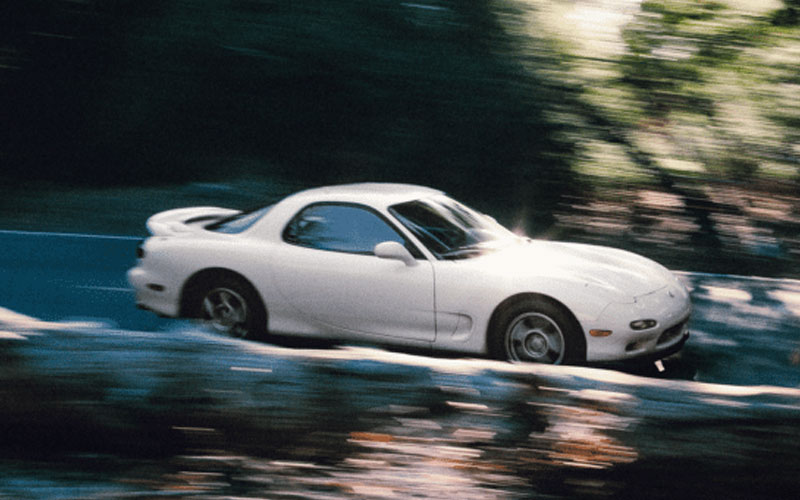
It’s as you push it to that limit over and over that the true beauty of the RX-7 comes to life. It has a perfect 50/50 weight distribution from front to rear and you can feel it. When you push it into corners you get gentle body roll as the only reminder that this car is more than 25 years old. Push the throttle just a bit harder and the turbochargers feed enough power to the limited-slip differential in the rear to break up the marriage of the tires to the road surface and you get predictable drifts in the direction of your choosing.
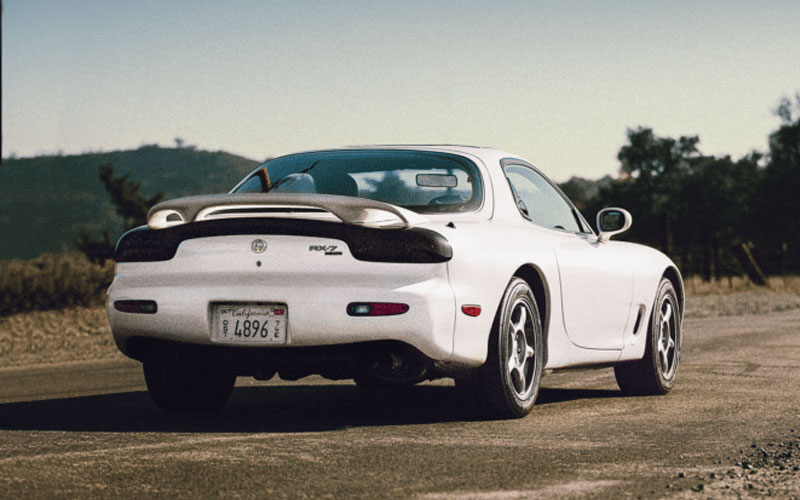
This Mazda was 1,000 pounds lighter than the rival Japanese sports cars of the day. Every move it makes is light-footed but unless you’re willing to bury the throttle on a regular basis it’ll never fulfill its truest potential. When you do reach that peak though, this car sings a song only Sirens can. History has taught us that the Rotary engine isn’t particularly practical compared with conventional piston-powered lumps, but when you’re driving this car the way it’s meant to be driven, you don’t care. You simply want to embrace this car for all that it is. Beautiful, powerful, nimble, analog, and deeply engaging. It’s everything you’ve ever thought it might be and just a little bit more.


